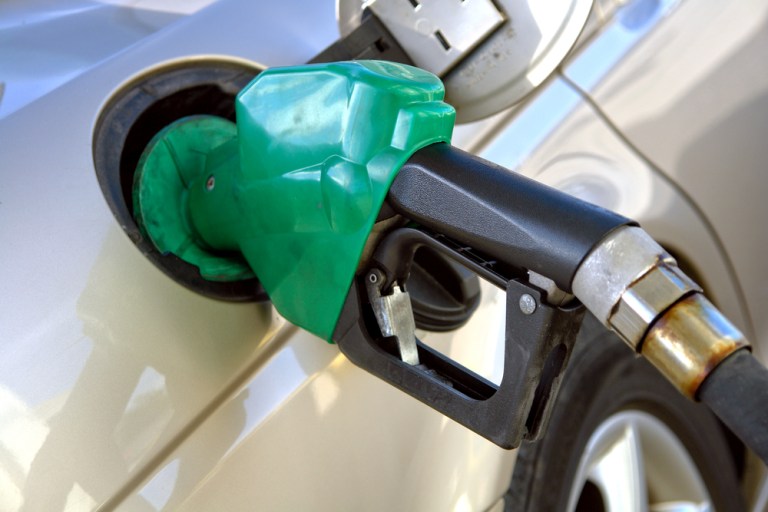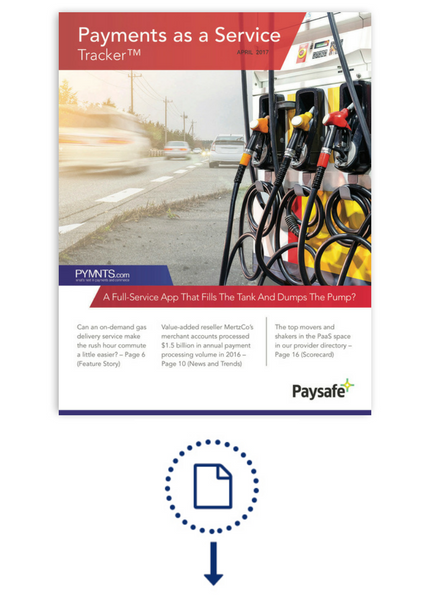
Are suburban commuters pumped for disruption? The April Payments-as-a-Service Tracker™, a collaboration with Paysafe, looks at how various players are changing business-as-usual with new payment tools and innovations. And, for the Tracker’s feature story, Booster Fuels’ CEO Frank Mycroft spoke with PYMNTS about the company’s on-demand fuel delivery service that’s aiming to ease rush hour pain for motorists. Plus, the latest headlines and developments from across the PaaS landscape and rankings of over 70 providers in the space, inside the Tracker.
 After a long day at work, most office employees want to head straight home and relax before going right back the next day to start the cycle all over again. But for commuters who drive to work, having to stop to fuel up amid rush-hour congestion can mean the difference between getting home for dinner on time or going to the gym or not.
After a long day at work, most office employees want to head straight home and relax before going right back the next day to start the cycle all over again. But for commuters who drive to work, having to stop to fuel up amid rush-hour congestion can mean the difference between getting home for dinner on time or going to the gym or not.
While there are typically transportation options available to commuters in urban settings beyond automobiles — from public transportation to rideshare services — workers in suburban areas are more likely to be dependent on cars to get to work. And depending on a vehicle to get to work comes with the sometimes stressful responsibility of making sure it has enough gas in the tank.
According to a recent study, the average U.S. commuter spends 42 hours stuck in traffic jams per year. Tacking on a trip to the gas station to fuel up only adds to the delays and lost time for these commuters.
In an effort to help workers who drive to work regain some of the time they lose shopping for gas, several companies are offering on-demand fuel services to spare motorists the trip to the pump. One of those companies, Booster Fuels, is currently offering its on-demand fueling services as an employee perk for companies in the California and Texas markets. PYMNTS recently spoke with Booster Fuels CEO Frank Mycroft about how the company’s service is helping office workers travel from home to work without having to stop to refill their tanks.
Taking a Digital U-Turn Away from Gas Stations
For Mycroft, the idea behind Booster Fuels’ on-demand gas service stemmed from personal experience. One rainy night a few years ago, when he and his wife were expecting their first child, he realized how frustrated he was by having to fill up his gas tank following a busy day at his job.
“I was working long hours and thought, ‘This is the one thing in my routine that adds the least value to my life,’” he said.
After consulting with friends and family members, he realized that the gas station stop is a shared pain point among many motorists.
“If you think about the last time you were at a gas station, you probably remember having to swipe your card multiple times or having to push a bunch of buttons on a display that probably was broken or hard to see,” Mycroft said. That’s on top of the usurped time.
This frustration prompted Mycroft to develop an alternative method for drivers to fuel up without trips to the pump.
He described the on-demand gas delivery system as being “180 degrees” from the conventional stop at a gas station, where motorists pull up to a pump, take out a credit or debit card to pay and pump the gas themselves. The new service enables motorists to park their car at work, pull out their smartphones and order a full tank of gas to be delivered to their car’s location from the Booster Fuels app.
Once the order is submitted, a Booster Fuels vehicle carrying regular and premium-grade unleaded gasoline will arrive at the location of the user’s car in the parking lot, and the driver will fill up the tank. Mycroft said the vehicle used to deliver the requested fuel is about the size of an SUV and can easily fit into a regular parking spot.
Users don’t need to be present at their cars when the fuel delivery vehicle arrives. Instead, they can leave the door of their gas tank ajar and go into work. The Booster Fuels app allows users to enter the description of the vehicle (such as make, model and color) and share the location of their car in the company parking lot with a PIN tool. Users store their payment information in the app, and the service charges them for the fuel. Once the delivery is complete, the app sends the user an email receipt and a text message confirmation.
“It’s all done digitally, saving motorists the hassle they have to go through at a gas station,” Mycroft said.
(Parking) Lots of Opportunity
When it comes to innovation, Mycroft observes that urban areas are typically the first places to reap the benefits of a new service or business model. But in the case of Booster Fuels, he said, he sees a chance to prioritize the needs of commuters in the suburbs, where there are more office park environments with open parking. These types of locations are more likely to need on-demand delivery gas services, he said.
“In our opinion, there’s a lot of [suburban office settings] in America that haven’t been as well-served by a lot of the innovations we’ve seen recently that are focused on [improving] urban living,” Mycroft said.
While other on-demand services like Uber and Lyft might be more suited to catering to an urban clientele, Mycroft said his company’s focus will remain on improving services for workers in the suburbs.
“That’s the most exciting market for us,” he said. “When we think about where we are in the Bay area, we get most excited about San Jose and the peninsula rather than San Francisco, because you have so many people commuting to work who need this service.”
Mycroft said Booster Fuels has so far delivered over three million gallons of gas to thousands of office workers on corporate campuses in the Texas and California areas. Beyond on-demand gasoline delivery, Booster Fuels also provides tire pressure checks, window cleaning and windshield wiper replacement for additional fees.
Offering these benefits not only helps customers spend less time on the road shopping for gas. By offering to deliver these services to a suburban office employee’s work site, Mycroft said the company is helping to ease road congestion, which, in turn, helps reduce carbon emissions.
A Roadmap to Convenience
On its website, the company claims its services can save commuters 30 to 60 minutes per month by helping them avoid stops at the gas station to refuel. But in addition to helping suburban office workers shave time off their commute, Mycroft said the company’s service delivers additional savings to consumers by reducing the cumulative wear and tear a vehicle endures traveling out of the way for gas. “If you’re driving five miles out of your way for gas, that’s costing you,” he said. “A lot of gas shoppers don’t factor that in.”
For motorists who are willing to drive the extra mile or two between stations to save a few cents per gallon on gasoline, Mycroft said the company also intends to eliminate the need for penny-pinching motorists to go gas shopping. Because the company buys its gasoline wholesale, Booster Fuels’ prices are typically 10 to 15 cents cheaper than prices offered by nearby gas stations.
“What we really feel good about is price transparency,” he said. “When you open our app, you can not only see our price for the day, but you can see the price of all the local gas stations in your area.”
By offering a service that provides suburban office workers with the means to check a necessary task off their to-do list and information that assures them that they are saving money, Mycroft believes he’s helping these employees recover time that might otherwise be lost at a gas station.
“The reason we started this business is so we can make everyone’s lives a little more simple and give people back their time to spend in more meaningful ways,” he said.
Eliminating the time-consuming tedium of gas station stops and helping office workers arrive home sooner after busy workdays could be a step in the right direction.
. . . . . . . . . . . . . . . .
To download the April 2017 edition of the PYMNTS.com Payments as a Service Tracker™ — a collaboration with Paysafe — click the button below…
About the Tracker
The PYMNTS.com Payments as a Service Tracker™, a collaboration with Paysafe, is designed to give an overview of the trends and activities of merchant platforms that not only enable payment processing of new and old technologies, but also integrate with other features to improve the merchant’s experience, including customer engagement, security, omnichannel retail, analytics, inventory management, software and hardware management and more.